Accommodation is such a personal thing but a huge cost to any trip you may make. Some people will only stay in 5 star accommodation whilst others wouldn’t care where they stayed. I would say that accommodation costs account for almost half of any trip you may do and that added with food in some cases does make a trip almost unaffordable. So over the course of time we have tried many different places and our personal preference is a place where you can cook yourself if you so desire. Whilst this may take some time out of your day when you could well be investigating your surroundings and doing wonderful touristy things it would also save quite a lot of money. For example it would be nothing to spend at least AU$20 for breakfast and around AU$40 for dinner not to mention lunch and munchies throughout the day. For a couple this is at least AU$120 a day and for a little more than that you could easily buy provisions for the week.
So I thought I might start my blog with accommodation. In fact on our first trip we were wanting to spend at least a week in London. We scoured the brochures we had, settled on an hotel that was central to everything and found it was going to cost the three of us in excess of AU$3,000, bed only! Thinking that we wouldn’t be able to spend the time we wanted there I started to look elsewhere and came across the Youth Hostels and one in particular was just off Oxford Street, right in the heart of this wonderful City. I corresponded back and forth as it was important for us to have family accommodation and to make sure it was clean, comfortable and easy to find. Soon we were satisfied with all these, so to find the cost. It actually worked out to be around AU$1,000 for a whole week. It was something like £10 per person per night. Added to this very reasonable cost we were to be in a place where we could provide our own food which if staying on hotel accommodation soon adds up to an excessive amount of money. And finally we would be mixing with many other travellers, from all walks of life and from all countries of the world as hostels have kitchens and community rooms in which to relax and unwind at the end of a very heavy day of doing touristy things!
We also decided to join YHA Australia which would save us even more.
Excited by our discovery we then decided to try and use hostels for the whole trip. We had a two week tour of England and Scotland followed by six weeks on the continent, so if we were to utilise hotel accommodation this would surely have blown the budget, in fact we may not have been able to stay as long.
Membership of YHA Australia enables you to utilise Hostel Accommodation throughout the world. We obtained a guide from the Hostels for accommodation in Great Britain and with this and scouring the net we soon had everything planned. Some we were able to book via the internet and some we needed to telephone. Booking via the internet proved extremely easy as everything was there and it was instant confirmation. Having to telephone proved a little more difficult as we discovered that these particular accommodations were manned by volunteers and in some instances they were only present between 5 in the evening and 10 in the morning. Timezones were tricky and combined with the fact that England was awake when we were asleep added to the dilemma but before long all our stops were sorted and many paid for in advance – another bonus to be sure.
Hostelling is a fascinating and very interesting way of getting about and meeting people and for the most part, particularly in England it took us to some out of the way and fascinating places. We stayed in a converted Cheese Factory in Litton Cheney in the south of England, in Elmscott, a renovated Victorian school, surrounded by stunning, unspoilt coastline with sea views of Lundy Island, and a former quarry worker’s building at Honister Hause in a spectacular setting at the summit of Honister Pass. In Stow on the Wold we were in a 17thC town house in the centre of the historic town. Our Room was located in the attic, about 3 floors up and no lift! Soon we had passed from England into Scotland and the hostels we stayed at in Glasgow, Aberdeen and Edinburgh were not as glamorous but none the less extremely comfortable and as welcoming as the ones we had already used. Heading back toward England our last stay in Scotland was at Coldingham Sands in a turn of the century house overlooking the stunning coastline. Back on English soil, in Yorkshire in a little village called Lockton, again a converted school, very tiny and only accommodating less than 20 guests (all shared accommodation). Thurlby found us in a 15th century forge and annexe, and offered a quiet haven to those seeking a tranquil base.
Portland YH in the South of England was an early Edwardian house with many original features overlooking the spectacular Chesil Beach and Lyme Bay.
What we enjoyed most about Hostel life in England, Scotland and Wales was the mixing with other travellers. Some we passed several times on the way and exchanged ideas of what to see and what not to see. There was an amazing mix of nationalities and everyone was extremely friendly.
Once on the continent, it is a little different story. Europeans are not as “victorian” in their outlook as English or Australians for that matter and a lot of the accommodation was either mixed or if we did have our own rooms, then the shower facilities were open to all. We soon got used to it and basically thought what the heck we are on holidays so will just go with the flow.
The best part of the European Hostels we found was that most included breakfast in the price. Whilst in some places it was just a croissant and a coffee or juice, in others there were rolls, meats, cheeses and fruits, enough to set you up for your journey for the day.
We spent a couple of days in Paris and the hostel we chose there was at Paris Clichy, a few stations from the centre of everything. It was a very large building with many floors and many rooms, typical of those that you find in the larger cities. We were up a few floors and had a bit of a view of the Eiffel Tower. The only other hostel we stayed at in France was in a place called Menton, a town that lies in the hills above the French Riveria. Again it was a smallish one, quite comfortable, with a massive dining area but all shared accommodation. We arrived late and left early but did get to see the stunning views.
Leaving France and into Switzerland we stayed at the Lausanne YH which we believe to be an Olympic Village – so well suited to a Hostel situation. It was clean, fresh and modern and this was the first hostel that we had stayed at that had normal beds – that is no bunks.
In Italy we had found it hard to find hostels, more due to the time that we were travelling as many closed for the winter and didn’t open until the tourist season commenced (end of May) and in fact in Rome itself we utilised a camping village which was fantastic. Camping Tiber was out of Rome, however the village provided a bus to the local railway station which then took you into the heart of the city. The camping villages in Europe are amazing places, in fact like small towns. They have their own supermarkets, restaurants, pools and night life. In fact after we had finished our holiday, we left our daughter in Germany with friends and she and her “german sister” went to work at Camping Tiber for about 3 months or so and our daughter then travelled to Greece on her tips!
The Hostel at Marina de Massa Ostello Apunao was a most beautiful old Italian Villa which had been seized by the Gestapo during the war. Our ensuite accommodation was not in the house itself but purpose built on the edge of the estate. Here we were able to enjoy a very cheap 3 course evening meal and they also offered marble carving classes.
The Ostello Ponte Felcino in Perugia was just beautiful. We were there in late May and it had only opened in April, in fact we were the first guests. The hostel is the door to a protected green area where you'll be able to see a wide range of wildlife and vegetation from all over the world!! The hostel is in a very old building that used to be a big farm. The receptionist showed us a plaque on the wall indicating the level the floods came to on 2.11.1944 – it was about 8 feet (over 2 mtrs) up the wall.
As we were unable to take our car into Venice we chose a little village about 20k’s away and stayed in the Ostello di Mira. We were the only guests at the time and they were not offering meals but gave us a voucher to a family run restaurant at the end of the road. It was hilarious as they did not speak a word of English and we not a word of Italian, but we ate well and the meal was delicious.
The Hostel in Innsbruck, also a former Olympic Village for the Winter Olympics some years before overlooked the ski run – what a site that would be during the wintertime.
In Germany the hostel situation at the time was quite different than other places, and are referred to as Pensions rather than youth hostels, though the ideas and formats are the same. In Munich it was the International Haus and this was formerly an Olympic Village. It was very comfortable and once in Germany this is where we got the full on breakfasts I mentioned before. In fact enough to take a little for on the road for later.
In Nuremburg it was the Jugend-Hotel outside the city itself, again very comfortable and had everything we needed. There was a group of, we think, businessmen also staying there and they did get a little rowdy after a few ales, but not enough to annoy! Onto Berlin and this time the International Hostel in Berlin, which was situated midway between everything we wanted to explore in that city. In fact they had bike hire and we travelled into the City and out to the Brandeberg Gates and East Germany by bike – we had such fun there!
In the Netherlands we stopped in a little place called Scheemda (prounced Schwamda). This little town was out of the way and a bit of a backwater, however there were some lovely properties and within distance of the coast. The room we had was very interesting in that it had a “cupboard bed”. To all intents and purposes the doors on the wall looked like a wardrobe, but when you opened them inside was a double bed!!!! Once we got to Amsterdam we were meant to stay in Haarlem, right in the thick of things but when we found out we were actually in a mixed dorm we got relocated some miles out of the city in a place called Bakkum where we had our own private room. Nothing out of the ordinary as far as Hostels go, it was however a Noordhollands Duinreservaat (North Holland Dune Reserve) was right next door and we had an hour’s walk there.
In Belgium it was the Hostels at Antwerp – which was one that didn’t open until 5pm and then Brussells which was on the outskirts of the town and neither were anything to write home about. I will say on a later trip to Belgium we stayed in the St Christoper Inns in Brugges and this is in the heart of this fabulous old medieval town and whilst the rooms were basic the hotel itself was quite nice – lovely breakfasts and they also had the restaurant open for the evening meals which were fantastic. There is a budget hotel and a youth hostel as well, right next door to each other.
In Luxembourg we stayed out of the City at Larochette – again the village is tiny, but it has a fantastic old Chateaux which they had started to renovate so there were things to look at, but at the time of year we were there, not much open by way of eateries. The Hostel was quite good but since we stayed there it has been renovated and upgraded somewhat.
In Whistler, Canada, we stayed at the Shoestring Lodge. Our daughter who was working in Whistler at the time had stayed there on arrival prior to finding permanent accommodation so did the bookings for us. We had about a week there, it was pleasant enough, we had a private room with ensuite and it was within walking distance of the centre of town. Once on the roadtrip through Canada we experienced some quite lovely hostels. In Revelstoke it was at the Samesun group of hostels, in Lake Louise at the Lake Louise Alpine Centre which was just beautiful and in Banff the Banff Alpine Centre. The HI in Calgary was just out of the town but within walking distance of a lot of the activities – we had a private room and the kitchen area for cooking our own meals was very nice. I have a note in my diaries that we weren’t that impressed with the HI in Edmonton in that although a family room we had to go upstairs to the toilet and shower facilities, so if booking there you need to sus all that out. In Jasper we were a little disappointed, this was a very rustic hostel, our room was extremely small but they did have a very large lounge area – I guess at the end of the day this is the most important thing as this is where you meet fellow travellers. With this hostel when we stayed there however the group of people weren’t overly friendly which was unusual. For the remainder of the places within Canada and indeed along the Western Coast of America we chose either motels or hotels as there weren’t hostels represented.
In America we utilised the HIUSA hostels. In Seattle, they were in the midst of renovating so I am sure it is quite different now. It was in a good location, right across from the waterfront and within walking distance of everything you want to see whilst in this city. Whilst I have been writing I have found out that the Seattle HI has actually relocated altogether – I am sure though it is just as good as when we were there in 2005. Chosen for parking convenience in San Fransciso it was the Fisherman’s Wharf hostel and again it was within walking distance for most of what we wanted to look at or alternatively to catch transport to see those things further afield. HI-San Francisco Fisherman's Wharf is the first and most famous hostel in the "City by the Bay." It is situated in a park setting with stunning views, and is housed in historic Fort Mason at the edge of the Golden Gate National Recreation Area. The HI at Santa Monica in LA was in the perfect location which enabled us to walk along that famous stretch of coastline and also had transport close by to access the city sites. In contrast the one we chose for our trip to Niagara Falls – was not in the best of locations, however the Hostel itself was quite a quaint old house and was within walking distance of the Falls itself. If we were to go to Niagara again however we would choose to stay on the Canadian side rather than the USA side! Our Hostel in New York City was situated near Central Park and Columbia University, the hostel is in a historic Victorian Gothic-style building on Upper West Side. Again as with most cities within walking distance of all you need to see or alternatively close to public transport. Here we had a massive private room with ensuite which was lovely.
In Spain we used a combination of Hostels, hotels and camping villages. In fact I would have to say our favourite of all time was the Parador de Ronda. This was a special treat as we had already been away from home for over a month and I would highly recommend at least one special stay outside your budget. Where else did we stay whilst in Spain and Portugal…..In Barcelona I had many years before spent a wonderful 2 weeks in a camping village right on the sea and we decided to go back there again – the problem was that we were there out of season and all the shops and restaurants had closed for the year. The pools also closed at 5.30. Our cabin although basic was comfortable and only 5 steps from the beach. That particular campsite has since closed to make way for enlargement of the airport facilities but the company has other campsites – it is called La Ballena – these places are certainly worth a visit. In Lisbon we also stayed at a camping village Parque de Campismo and again although at the wrong end of the season it was just lovely in the bungalow under the pine trees.
The hostel in Coimbra was set in a leafy street and a short stroll to the older part of the city. We had a huge room and breakfast was included which was a bonus.
The final Hostel in Spain was at Alborache just out of Brunol and was an old charming manor house fully renovated and modernised. It was a huge facility containing a library, workshop rooms, gym, two small pine woods, playground areas, sports facilities and a swimming pool. The only fallback with this one was that there were no eating facilities – either in the hostel nor the little town nearby – and we appeared to be the only guests at the time! It was but a place to put our head down before continuing our journey through Spain.
For most of the rest of the places we stayed in Spain we utilised hotels and the best way of choosing is to simply scour the net. Make sure you check photos and also maps of where the places are. Contact the owners and endeavour to have “email” conversations – if they do not readily respond then perhaps it is not the place for you. If you are only using as overnight stops it doesn’t really matter too much as long as it is in a reasonably safe area, however if your stay is longer then you need to make sure you are near to all the places you are wanting to visit, either by using your car or public transport. One other thing you do need to keep in your mind when travelling throughout Europe is that many places do close over the winter time, particularly in the more mountainous areas, so if you are travelling off season which is what we generally do, then hotels would be your best option. This is due not only to the weather, but to lack of tourists.
On a recent trip through France, we opted for hotels and got onto the Accor site. This covers Ibis, Sofitel, Novatel, Etap & their budget accommodation Formula 1 all over the world and they have a loyalty program whereby you can accumulate points and eventually get a free room. And another whereby if you book and pay in advance you get an excellent deal – in fact in some cases this worked out cheaper than hostel accommodation and bearing in mind that most places in France are shared/mixed, very few private rooms, this suited us much more. We were very happy with this hotel chain.
And lastly, if you are wanting a longer stay anywhere, simply search the net for the type of accommodation you want. For example when we went to Italy in 2006 I really wanted to stay in a castle/chateaux/convent, something really different. Our intention was to stay for 1 or 2 weeks in Tuscany. I found an excellent place in a little town called Comano, a converted Mill, owned by a lovely girl Natasha from England. I corresponded with her quite a lot to make sure we were both comfortable with arrangements and finally booked. This was out of the way, but still close enough to take a day trip to Cinque Terre and up into the mountains where during the winter there are plenty of ski fields – here is a link to the site Casa Amato in the village of Castello di Comano and some reviews.
At the time of searching for somewhere in Tuscany I also found another place that sounded wonderful and we were faced with a dilemma of where to go, for this one was way down south, almost to the toe in a place called Tropea. This one was a restored Convent, had also in it’s life time been used as a hospital, barracks and I believe a girls school. The village of Tropea was divine. The Apartment situated in a cliff face some 300 ft from the Tyrrhenian Sea below and although we were there in November the weather was divine. There are two apartments in Il Convento, Sole and Luna and these trace from the 13th Century. We stayed in Sole, the smaller of the two and it was quite large enough for two people. Added to that, we had a wonderful balcony area which Luna didn’t have. I absolutely, thoroughly recommend staying here. So yes you can see, our entire trip was planned around two accommodations and it worked out wonderfully well, we got to see parts of Italy not visited before.
I would return to these places in the blink of an eye!
Saturday, October 31, 2009
Accommodation - some hints & tips to save you money
Subscribe to:
Post Comments (Atom)


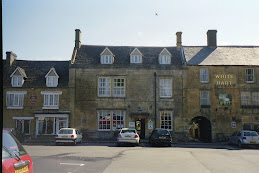
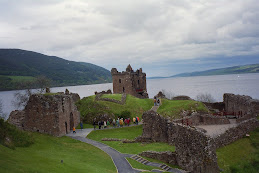
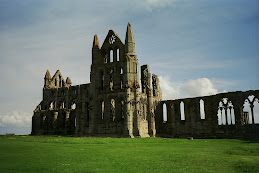
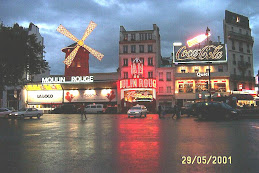
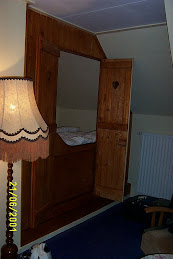


No comments:
Post a Comment